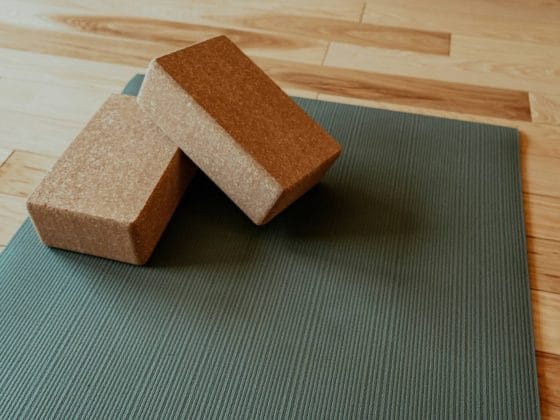So the time has come to take the plunge and become a yoga teacher! Congrats.
When it comes to choosing an online yoga teacher training, there is a lot to look at. I know it can be a little overwhelming trying to figure out what is the best online yoga course out there. However, fear not, we have tried to break it down, and lay out some of the most important things to check into so you can see if a yoga teacher training is right for you.
There are a few questions to ask when choosing an online yoga teacher training so that you can find one that will be the perfect fit.
Questions to Ask When Choosing an Online Yoga Teacher Training?
To start with these two questions might be the most important questions to ask yourself.
- 1. What Type of yoga are you interested in?
- 2. What Medium do you enjoy learning in?
1. What Type of yoga are you interested in?
What style of yoga do you want to learn? This is an important question to ask before signing up for an online yoga teacher training. Each course focuses on a specific type of yoga, so it is not worth enrolling in a course if it is not on the style of yoga that you are interested in learning about. Let’s take a look at some of the main styles of yoga.
Hatha yoga – this typically is the most common form of yoga that you will find in most courses, it often a slower, more gentle in comparison to a vinyasa class.
Vinyasa yoga – is one of the most popular forms of yoga in the U.S. Vinyasas aim to connect the breath with the movement, with each inhale and exhale the body moves. This is probably the second most common form of yoga that is taught in YTTC
Ashtanga yoga– this is a physically demanding practice that includes synchronizing breath with movement and holding poses for an extended period of time.
Yin yoga– focuses on long-held, passive floor poses that targets the connective tissues.
Iyengar yoga– often uses props, such as blankets, straps, and blocks to help students achieve proper alignment.
Kundalini yoga – focuses on breath work, mantra, and meditation often all in combination with each other.
2. What Medium do you enjoy learning in?
When it comes to online instruction, there are a few different formats that you will come across:
- Live videos – this is where the instructor is live and teaching the class in real-time.
- Recorded videos – these are classes that have been recorded and you can watch them at your own convenience.
- Group meetings and chat rooms – some courses will have scheduled group meetings or chat rooms where you can interact with the instructor and other students.
- One-on-one coaching and feedback – this is where you will meet with the instructor one-on-one to get feedback on your practice or if you have any questions.
- Written handbooks and textbooks – some courses will provide you with written materials, such as a handbook or textbook, to help you follow along.
- Mobile apps – there are some courses that come in the form of an app that you can use on your phone or tablet.
- WhatsApp and Email – some instructors will use WhatsApp or email to communicate with their students.
- Private FB groups – some instructors will create a private Facebook group for their students to interact with each other and the instructor.
There are a variety of different mediums that online instruction can take. It is important to find one that suits your learning style. If you are a visual learner, then a course that is mostly video-based would be a good fit; or, if you are someone who needs to have personal feedback, then a course that offers a lot one-on-one time with the teacher would be a better option.
Courses that are heavily focused on live lessons and one-on-one video coaching generally cost more but offer more hands-on and comprehensive guidance. These are well-suited to those who want a more personal touch and be helped along with motivation and accountability.

If you are asking yourself, what should I look for in an online yoga teacher training then here are few more questions that might be worth asking yourself.
3. Who are the teachers?
This is an important part of any course. If it’s possible, find out more about the teachers beforehand, ideally by trialing out the course beforehand. This will help you see if you like the style, tone and demeanor of the teacher before you go all in.
You can also have a look at the teacher’s website, their past student reviews, and Instagram. The most effective way to see if you like how the teacher teaches is to take a class beforehand. Most teachers will have material out there so you can see if you vibe.
4. Does the yoga course have good reviews?
Another good way to see if a course is worth the money is to see what past students say about it. Look for testimonials on the website, and if possible, find reviews on third-party websites.
You could also have a look at Yoga Alliance website which has a list of all the teachers and online yoga schools which will give you a list of reviews and rating of all the past students that have taken the course.
5. Is the course Yoga Alliance certified?
While this does not make or break a course, it does add another layer of credibility. Not that you necessarily need to be Yoga Alliance certified, but ensuring that a school is certified does help to add another layer of credibility.
6. How much time do you have to complete the course?
Some courses give you 1 month, others 3 months, 6 months, 12 months or even lifetime use.
While each basic course requires 200hours of instruction time, how long it takes you to fulfill those requirements is up to the school.
It can be nice to be able to have the freedom to finish the course at your own choosing. Having lifetime access is a big plus, and many courses do offer (though not all). Course competition will be dependent upon if the course is mostly LIVE or not. Most self-paced courses that only have weekly interactions will give you lifetime access.
Cost?
The cost of a yoga teacher training course can vary anywhere from $300 to $3000. This depends on things like the type of instruction, how the course is structured, and what kind of materials and support are provided.
Luckily for those students on a budget, online yoga courses are very affordable.
7. Is the training live or recorded?
Some yoga courses are all pre-recorded, whereas others are mostly all live, whereas others are a mix of the two. One is not necessarily better than the other, it’s more about what you are looking for and what fits in your schedule.
I find that it is nice to have some live one-on-one interactions with the teacher as well as the students. Having different online platforms to engage with the community is also something that you might want to look into.
8. Are the course material included?
Some yoga courses include all of the course materials in the price, while others do not. Make sure you know what is and isn’t included so that you can budget accordingly. This might not be a huge extra cost many not be a deal breaker, but something to look into nonetheless.
9. What are the modules like?
You are going to have a certain standardized core curriculum that is required, but outside of the core modules, that leaves room for a ton of other modules that the teachers can fill with pretty much whatever they want.
Different programs can have very different types of modules with classes in areas such as, Tantra, Ayurveda, How to market your yoga business, what to do after you get certified, Yoga for Trauma etc…
10. Online Yoga vs In Person Yoga
There are some pros and cons for doing yoga online rather than in person. While in-person trainings are hard to beat, as it is much more of an immersive experience that gives you a level of depth that is hard to compare, an online course is not without its advantages. In-person training definitely wins if you are looking for hands-on teaching, a community, full immersive experience, a yogic lifestyle, or a retreat-like experience.
In comparison, an on online YTTC course wins if you are looking for flexibility, an affordable option, to deepen your practice, if you can’t travel, would like to expose yourself to different aspects of yoga, or have a busy life and just want to expose yourself to something different.
Like everything, there are pros and cons, its more about what works for you.
Takeaway
When looking for an online yoga teacher training, it’s important to consider a variety of factors in order to find the best fit for you, however, these are just some of the things you may want to take into account when making your decision.
Just trust your gut and go with what feels right!



